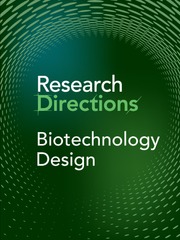Context
Living textiles are evolving at the interface of textiles and biology. This emerging field proposes methods to design with, by, and for the growth of microorganisms using textiles thinking, textile materials and textile process. Textiles transform the microscale of fibres and biosynthesised polymers into high performance, environmentally responsive systems that function at a macroscale through the hierarchical structuring of constituent materials. As biotechnology looks for scalable solutions for diverse applications in the built environment and beyond, textiles offer a variety of strategies for bio-assembly and bio-fabrication.
Interdisciplinary research is developing from advanced textile processes such as spinning, knitting, weaving and non-wovens in collaboration with expertise from across biological sciences. As the field transitions into industry, could the unresolved environmental challenges in the global textile supply chain be tackled using biotechnology? One answer looks to nature, using biomimicry to develop methods that reflect the way nature builds with fibres. Could biomimetic living textiles be designed from available local resource via low energy and circular production?
This question invites research contributions that are located at this intersection of textiles and biotechnology to reveal the ideas, networks and new materiality emerging within the field. We seek research reporting on experimental work and new methods, as well as strategies to cultivate living textiles that have the potential to radically reduce the impact of our industries.
Contributions
We invite contributions in the following areas
Results
-
Studies which report on original textile bio-fabrication and bio-assembly strategies.
-
Innovative methods that develop textiles as an interface for multispecies bio-hybrid and biocomposites supported by experimental data.
-
Experimental results that report on the functionalisation of textiles using engineering biology approaches.
-
Examples of responsive biomaterial and bio-hybrid textile systems.
-
Evaluation of large-scale living textile prototypes with performance analysis.
Analysis
-
Reviews of key materials, technologies and case studies.
-
Analysis of applications for living textiles.
-
LCA and environmental impact of specific case studies.
-
Interdisciplinary perspectives on living textiles.
Impact
-
Reviews of industrial applications and interest in the area of living textiles.
-
Reviews and reports of exhibitions and design work.
-
Classification systems for living textiles.
-
Opinion papers discussing how living textiles can reduce environmental impact of the textile industry.
-
Critical evaluation of existing projects, and their likely efficacy, evaluated against existing textile materials and processes.
Additional material and early outputs
We welcome a broad range of curated discussion pieces, including submission of design portfolios, short polemics, position pieces or provocations. As the question content develops, we expect this engagement to comment on the existing archive of published material.
How to contribute to this question
If you believe you can contribute to answering this Question with your research outputs find out how to submit in the Instructions for authors (https://www.cambridge.org/core/journals/research-directions-biotechnology-design/information/author-instructions/preparing-your-materials). This journal publishes Results, Analyses, Impact papers and additional content such as preprints and “grey literature.” Questions will be closed when the editors agree that enough has been published to answer the Question so before submitting, check if this is still an active Question. If it is closed, another relevant Question may be currently open, so do review all the open Questions in your field. For any further queries check the information pages (https://www.cambridge.org/core/journals/research-directions-biotechnology-design/information/about-this-journal) or contact this email (biotechnologydesign@cambridge.org).
Competing interests
The Author declares none.



